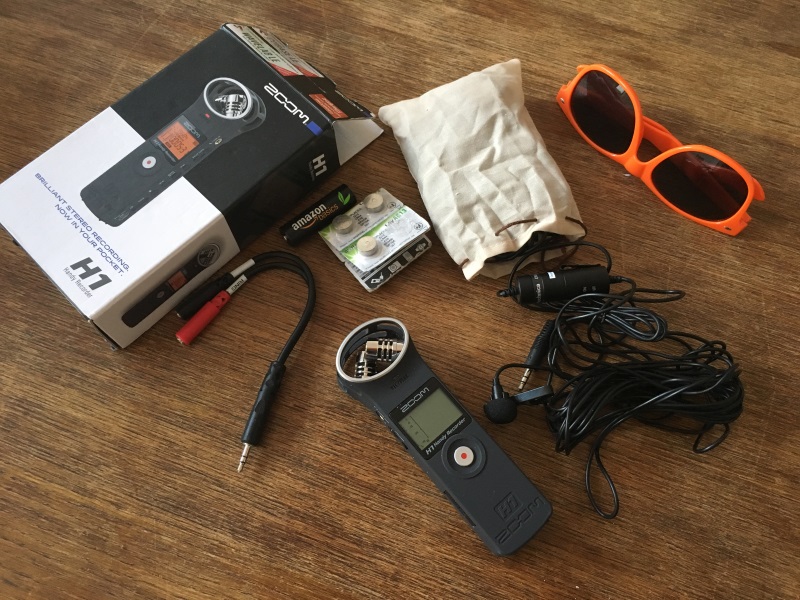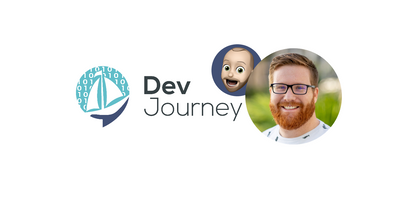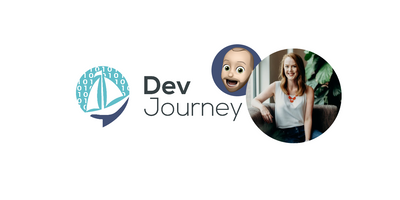One month ago, I rebooted the Developer's Journey podcast after a year long hiatus. I then decided to set the pace on a sustainable two-weeks basis and hold it. At the time of this writing, I published 3 episodes. 3 recordings are ready for publication. 4 invitations are running.
To do so, I had to streamline my recording and publishing process a little. There’s still a lot of possible improvements, but here‘s how it looks behind the curtains. Here‘s the menu:
- Networking
- Invitation
- Scheduling
- Recording with Skype
- Recording in Person
- The recording flow
- Begin the recording
- Interviewing
- End the recording
- Edit in Audacity
- Mount the track with Auphonic
- Upload on Buzzsprout
- Release and Marketing
- Closing words
Networking
The „guests“ acquisition process starts way ahead of the recording. It starts with simple networking during conferences. Or with guests and contacts introducing me to potential guests. This is the pitching phase.
Invitation
Once I have an email address and an informal GO, I can send a formal invitation.
This invitation email explains why the DevJourney project. It will help the guest understand what I am after and what they can contribute. It also explains the technical details of the recording. And finally how the guest can prepare for the interview.
I like to add personal questions for 4 reasons:
- First I want the guest to feel welcome. How better than by highlighting all the good things they can add to the discussion?
- Then it will set the tone of what kind of stories I am looking for and thus orient the flow of the discussion.
- Then, it might be useful (to me) if we fall short of topics or if I need to redirect the discussion during the recording.
- Finally, it also has a psychological-safety effect on more introverted guests. It helps them prepare beforehand and know what is coming.
Manual time: 10min (manual steps + writing down questions)
Scheduling
My current day-job makes it hard to record during the day. So I have to record at night, when the kids are asleep (>21:00). This makes the scheduling both easier and harder at the same time.
It is easier since the time slots are clear „next Monday, Tuesday or Thursday from 21:00 GMT+2“. But those amount to 8 hours per week only.
I used « book yourself » tools (Timebridge and Vyte) for a while. These tools sync with your calendars, display the free slots you have and let the guests book YOU as they see fit. Right now, it is overkill, but I will soon add „daylight-recording-slots“, so such a tool will come in handy again.
To say the lease, there is potential to reduce headaches here...
Manual time: 15min spread over days and emails
Recording with Skype
I usually record using Skype, turning off the video to optimize the bandwidth.
I used to use Pamela Call Recorder to record the call, but it is not playing nice with the last versions of Skype lately. I switched over to MP3 Skype Recorder. Important here is to use a tool that records both channels separately.
A new version of Skype that allows recording should come out at the end of the summer. We'll see how that goes.
So far I can‘t complain about the quality too much. There are always a few inaudible words here and there. I didn't experience anything that completely undermined the understanding of a sentences yet.
Recording in Person
If I am so lucky, I have a mobile setup to record in person. It is a small "Zoom H1 Recorder" (a newer model is now available, the Zoom H1N) with a HosaTech YMM-261 Stereo splitter and 2 Lavalier microphones. The microphones are self powered. The splitter allows the inputs of the two microphones to be recorded on separate stereo channels (right and left). I didn't try myself, but as per this thread not every splitter can do this...

All this equipment fits into that box, including the replacement batteries. The sunglasses not included... but are here as a size reference ;)
The recording flow
The recording starts with 5-15min chitchat. English is not my native language so I need to warm up, forget my French and German accents and get in the game. We use this time to review the recording process. I remind the guests of what is coming and I answer eventual questions. Then we often circle around a couple topics we should not forget to speak about. And finally, we decide on a way to start the discussion.
Begin the recording
Don‘t forget to start the recording! I mean it. Most of the tools do it automagically when the call starts... but if it doesn't, now is the time to check!
I start with 5 seconds silence to get a reference of the ambient noise (to remove it afterwards). Then I read out the intro. This intro includes a short biography of the guest. I then ends with me telling where and when I met the guest and why I invited them.
Interviewing
During each recording I take a lot of notes. About a double page of my Moleskine notebook for a 30 min meeting. This is important for 3 reasons:
- I am by no mean a good interviewer, but I‘m working on it. I try to guide the discussion and keep my questions open. I try to reformulate when something was not clear. I keep track of the side discussions to come back to them. And here it helps to write things down and track of how a topic came onto or left the table.
- I try to underline things that the guest said and try to build back-links in the discussion. For instance „oh right, it makes sense, furthermore in light of what you said before...“. There, the notes are often useful.
- Finally, I write show notes right after the recording. The written notes are VERY helpful if you don‘t want to go through the audio recording to remember what you said!
Hint: take notes with a pencil or a pen, a keyboard would make too many clicking noises. And don‘t put the piece of paper right beside your microphone or you will hear scratching on the recording.
Manual time: 60min
End the recording
I try to keep a soft time-box of about 30 to 45 min. Which means I will start to steer the discussion toward my “standard closing questions” at the 25 min mark. Those are the following:
- What is a good software developer nowadays?
- If you had to hire someone, who/what would you be searching for?
- If you could give only one advice to the listeners, what would it be?
- What's on your plate right now?
- Where can the listeners find you?
At the end of the recording, I close with a short sentence that I stole from Scott Hanselman: “it’s been another episode of DevJourney, we’ll see each other in two weeks”.
Edit in Audacity
I try to keep the edits to a minimum. When I edit something, I so it with Audacity. Successful developers also fail, face uncertainties and go back & forth with their ideas. Of course I want the guests to “sound good”. But I don’t want to artificially push it. The guests should come out as authentic when they speak about their journey.
The only exception are the introduction and eventual exceptions:
- I pay close attention to the first 5 minutes of the recording. There I try to remove as many blanks or hums as I can and make it particularly enjoyable.
- If a guest say something they shouldn’t and realize it, I can edit it. They should try to make a short blank, tell me and start over. But it hasn’t happened so far.
Then, I split the stereo channels into two tracks and remove the ambient noise. Finally, I cut the beginning and end to keep the podcast content and export the result.
Manual time: 10-60min
Mount the track with Auphonic
Once I have a file exported from Audacity, I upload it into Auphonic. The service costs are negligible (2 hours of content per month for free, then 2€ per additional hour) and it performs further corrections like:
- Leveling
- Dynamic range compression
- Gating
- Noise and hum reduction
- Crosstalk removal
- Ducking
- Filtering
- Loudness normalization
- True peak limiting
- Adds the pre-recorded intro and outro jingles
- Flattens out the resulting file from stereo to mono
Before I upload the track, the guest has the choice of reviewing it. I then push it on Dropbox and send a unique link to the guest.
Manual time: 5min
Upload on Buzzsprout
Once I get the GO from the guest, I upload the episode to Buzzsprout, my hoster. I add the show-notes and the right tags and schedule the publication for the right day.
Manual time: 5min
Release and Marketing
Once the episode is live, I tweet about it, adding the guest in the tweet. I also try to retweet that tweet a few times in the following days.
Manual time: 5min
Closing words
The raw time invest for one episode amounts to 2 to 3 hours:
- 30 min to schedule and prepare the recording
- 60 min recording
- 30-90 min post-production
Now let me ask you questions:
- Is this what you expected?
- Do you/would you do things differently?
Give me your tips and tricks, I’d love to learn from you!
PS: the Amazon links present in this post are affiliate links. It is not much, but the few € they occasionally bring, contribute to paying for the services I use to create more value: this blog on Ghost, the DevJourney Podcast on Buzzsprout or Zapier with which I automate many background processes. Thanks for your understanding!



